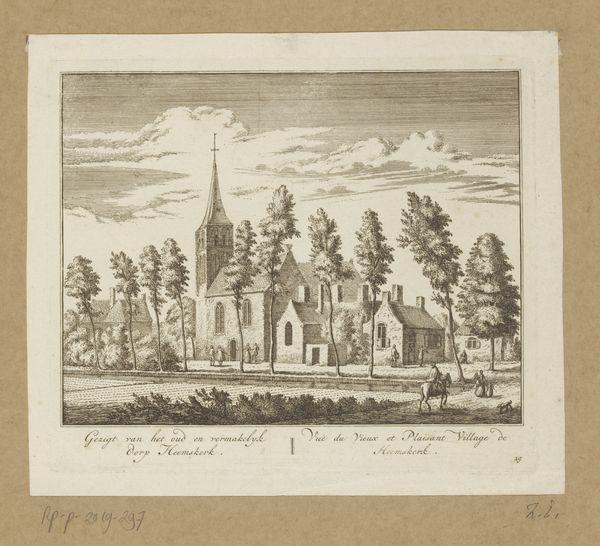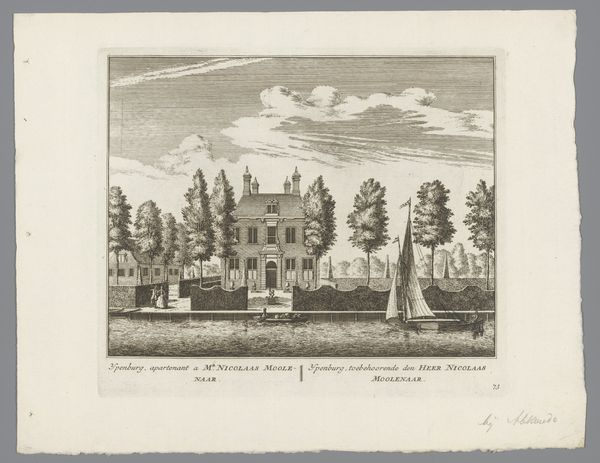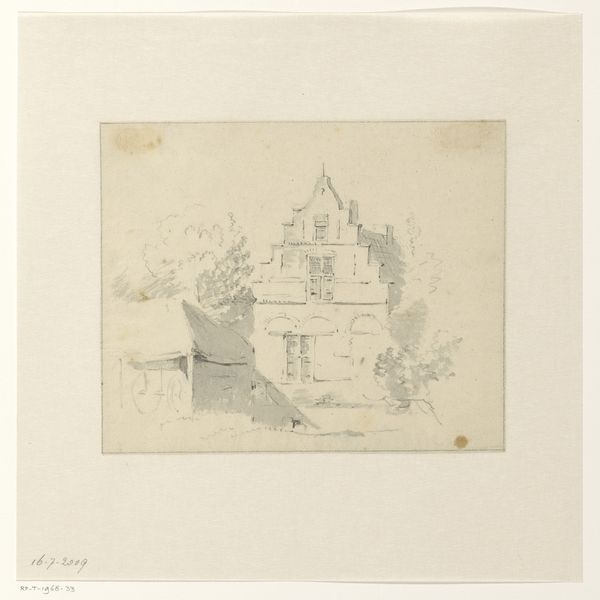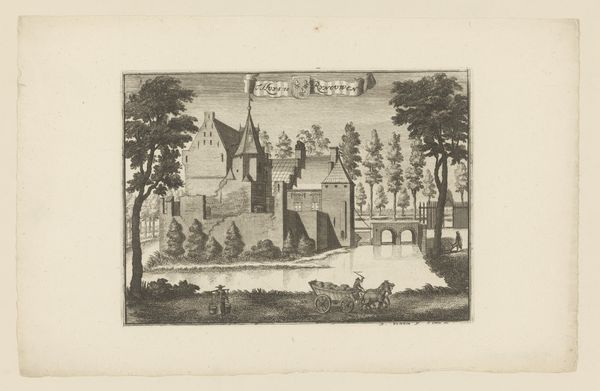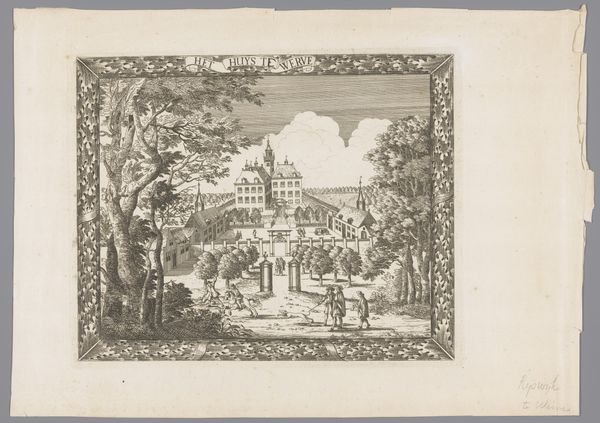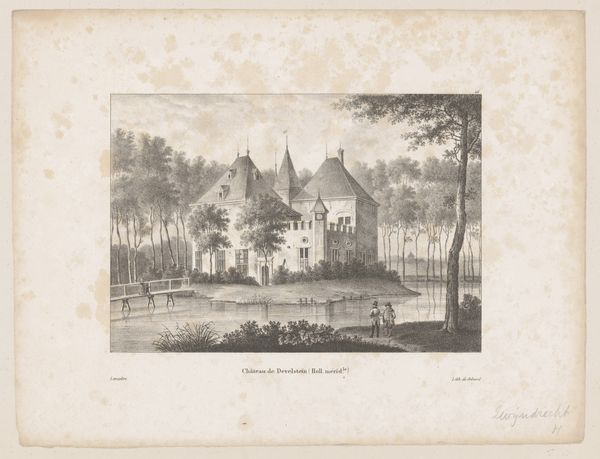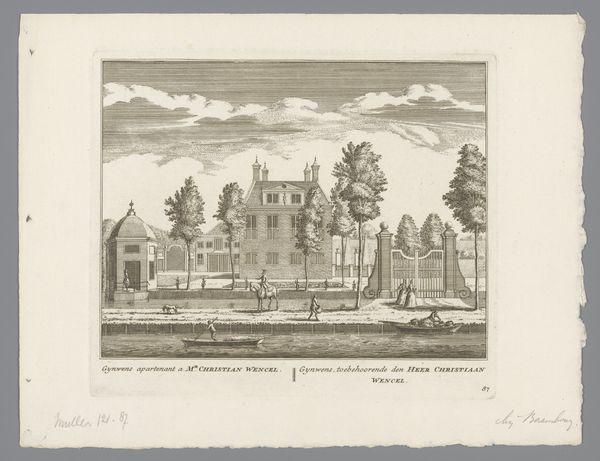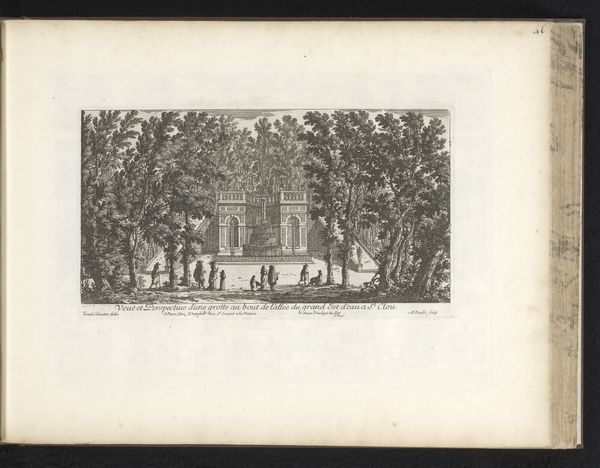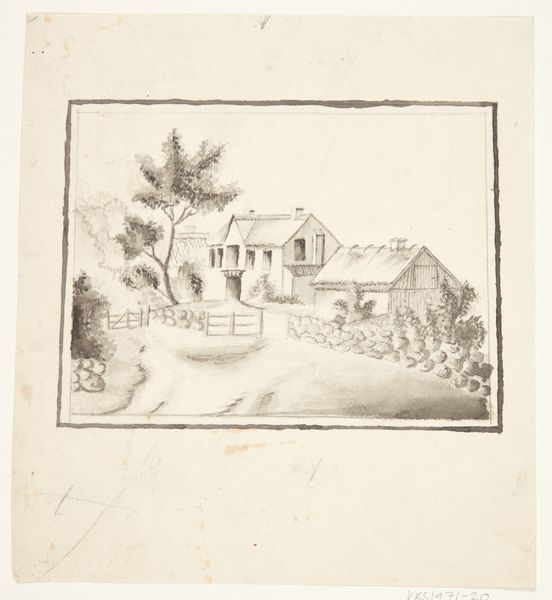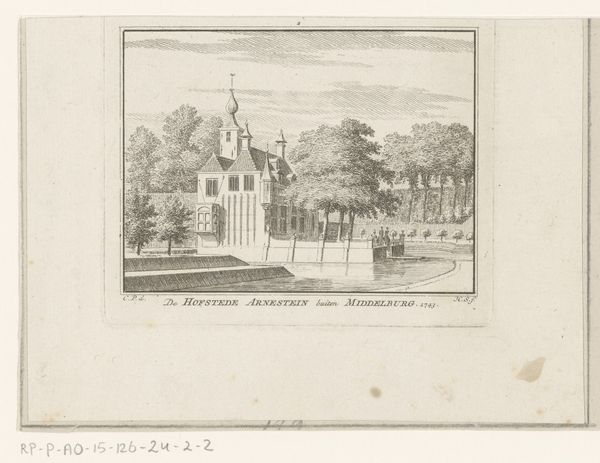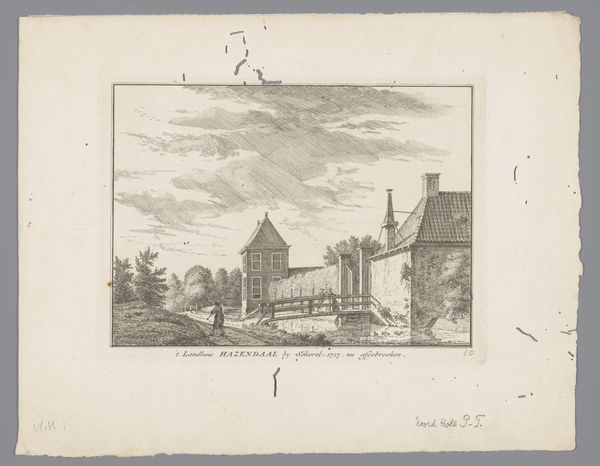
print, engraving
# print
#
romanticism
#
cityscape
#
engraving
Dimensions: height 222 mm, width 292 mm
Copyright: Rijks Museum: Open Domain
Curator: This engraving, titled "Gezichten op de Franse tuin in de Plantage in Amsterdam," by Edouard Taurel, made in 1850, gives us a glimpse into a specific location and moment in time. What strikes you about it? Editor: It feels very… meticulous. All those little details, the people, the architecture; it's like a collage of snapshots, all framed within this decorative border. Given it’s an engraving, what can we understand about the social function of the piece in its own time? Curator: Exactly! Let’s focus on that ‘meticulous’ aspect. Consider the labour involved. This wasn’t a quick sketch, but a carefully crafted print, multiplied and disseminated. This connects to a rising middle class, who likely consumed these images, eager to engage with scenes of leisure and civic pride. How does that connection change how you understand the imagery? Editor: That gives a whole new layer! It’s not just about what’s depicted, but about who’s looking, and why. The depiction of leisure, of almost bourgeois entertainment, suggests a consumer class with money and time to look at art. Are there any social issues relevant to how these images might have been consumed? Curator: Absolutely. Romanticism, in its own way, provided the means and rationale for consuming images like this one: you can feel yourself as a consumer even through imagining your relation to leisure activity. In relation to your other point, also consider the absence of certain figures. What are the ramifications of the labor involved in *making* this artwork, in relation to those enjoying this garden? Editor: I see what you mean! The idealized representation hides the labor involved in both the garden’s upkeep, and in the print’s production itself. It seems to cater to a specific, privileged audience, and reinforce certain social norms. Curator: Precisely! This wasn’t just a picturesque scene; it was a commodity, shaped by social forces and reflecting the values of its intended consumers. By focusing on its production and consumption, we unlock a deeper understanding of its cultural significance. Editor: I didn’t expect to think so much about social class while looking at a pretty garden scene! It is so easy to just enjoy it without questioning the role of labour. Thank you for opening my eyes to new questions regarding social relations in art! Curator: Indeed! And with a materialist perspective we acknowledge art's power, while challenging simplistic readings and revealing the complex networks of production, consumption, and ideology that underpin seemingly innocent images.
Comments
No comments
Be the first to comment and join the conversation on the ultimate creative platform.
